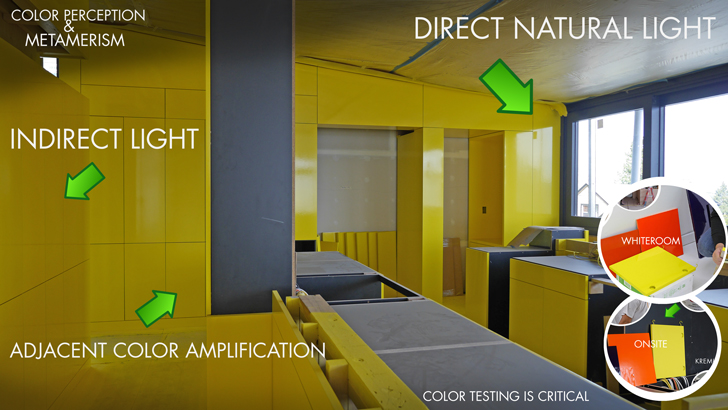What is Metamerism in Painting?
Metamerism might sound like a complex term, but it’s a phenomenon you’ve likely encountered if you’ve ever been frustrated by paint colors looking different in the store than they do on your walls. In colorimetry, metamerism refers to the matching of the apparent color of objects without matching their spectral power distributions. Essentially, this means that colors can appear the same under certain lighting conditions but differ under others. This occurs because different light sources can alter the way colors are perceived, a fact not always considered during the paint selection process. Understanding this can help you make more informed choices when selecting paint colors, ensuring they look consistent in various lighting environments. It’s crucial for both homeowners and designers to recognize how light source variations can affect color choices in interior design.
The Challenge of Choosing Paint Colors
Choosing the right paint color for your room can be tricky due to metamerism. The color that seems perfect at one moment can change throughout the day as natural light shifts from dawn to dusk. This variability is due to how different types of light interact with the paint on your walls, causing variations in appearance. Indoor artificial lighting, such as LED or fluorescent lights, can also dramatically alter how a paint color looks. For more insights on selecting the perfect color, visit Sisu Painting. Understanding these lighting effects is crucial for avoiding unexpected and potentially disappointing shifts in room color after painting.
Sheen Variations and Their Impact
The sheen of paint, or the degree of flatness or shininess, plays a crucial role in how colors are perceived and can significantly impact the final look of a room. Common sheens include flat, eggshell, satin, semi-gloss, and high gloss, each offering different levels of reflectivity. Flat sheens absorb more light, minimizing reflections and hiding surface imperfections, while high gloss sheens reflect a lot of light, enhancing color richness but also highlighting surface flaws. This variation in sheen affects how much light is absorbed or reflected, which can significantly alter the appearance of a color. Knowing how different sheens react under various lighting conditions can guide you in choosing the right one for your painting project.
Embracing the Beauty of Metamerism
While metamerism presents challenges in achieving the perfect color match, it also adds depth and variation. These elements can enhance the aesthetic appeal of a space. The subtle changes in color under different lighting conditions can add character and dynamism to a room. Appreciating these variations leads to a deeper understanding and enjoyment of how light and color interact in your living environment. By embracing metamerism, you can turn it to your advantage. This allows you to create spaces that are not only beautiful but also dynamic and responsive to lighting changes.
Final Thoughts
Metamerism is a captivating aspect of color theory and plays a pivotal role in painting and interior design. By understanding this phenomenon, you can make more informed choices about paint colors and sheens. This ensures that your space remains beautiful at any time of day. Armed with this knowledge, you can anticipate how colors will change under different lighting conditions. You can choose options that maintain their beauty and integrity in various environments. Embracing metamerism transforms it from a potential obstacle into a powerful tool. This tool helps create visually captivating and harmonious spaces in your home. For more painting tips and advice, don’t forget to check out our blog.



No comment